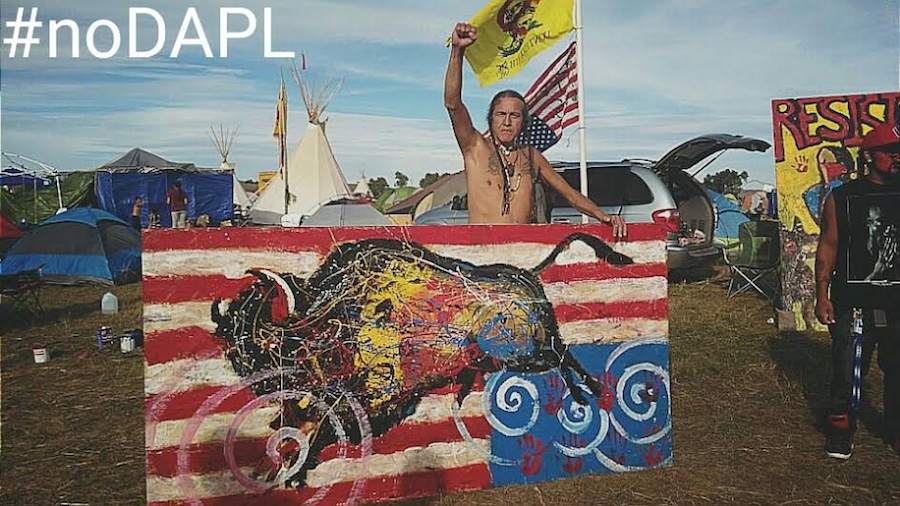
Native Americans are a ceremonial people of song and prophecy. One prophecy, that of the Seventh Fire, predicts that protectors from the four sacred directions will rise to defeat a sinister black snake that burrows deep in the earth and ravages the lands. The protectors are led by the seventh generation — today’s young people — and guided by the wisdom of the elders.
Indigenous people have been plagued for centuries by demons imposed upon them by our American government. Native children taken from their families and placed into strict boarding schools, the illegality of prayer in the first half of the 20th century, the tragedy of discriminatory police slayings and the highest suicide rates in the country represent just some of the injustices they have endured.
Our native comrades have been systematically stripped of their land. They’ve been pushed onto reservations where poverty and drug abuse run rampant and made to witness the plunder of Earth’s natural resources from their homes.
This summer I had the privilege of spending time at the Standing Rock Indian Reservation in North Dakota, where thousands of Native Americans and their allies are currently resisting a $3.7 billion crude oil project known as the Dakota Access Pipeline (DAPL). The struggle garnered national attention when a group of indigenous youth ran from Standing Rock to Washington D.C. — around 70 miles a day for three weeks.
The 1,172 mile pipeline is expected to transport around 500,000 barrels of oil per day and, if completed, will burrow under countless water sources, including the Missouri River, threatening water for 18 million Americans. Because DAPL never consulted with the tribal nations whose lands will play host to what natives have labeled “the black snake,” DAPL violates the UN Declaration on the Rights of Indigenous Peoples.
The resistance of the water protectors at Standing Rock is justified then, not only through international law, but also through the US Constitution’s Supremacy Clause and agreements such as the 1851 Fort Laramie Treaty, which promised these lands to the first nation’s people.
While at the encampment, which has evolved into a vibrant community, I interviewed several water protectors, including a young medic from the Red Warrior Camp named Alas.
“People think we are fighting for the right to clean water, but really it is the Native American people’s responsibility to ensure that we have clean water,” Alas said. “That responsibility puts us at odds with the colonial government that is strong arming around here. It’s not up to us that we have reached peak oil, you know? Greenhouse gases and ozone layers, all this shit, water levels are rising. That’s not happening because we say it is, it’s happening because that’s what this machine is creating. [This #noDAPL movement] is a continuation of the indigenous resistance and indigenous protection that has been happening here since the beginning of time.”
In early September, DAPL bulldozed over three sacred indigenous burial sites and hired private security officers who confronted unarmed praying protectors at construction sites with pepper spray and vicious dogs.
Since then, dozens of water protectors have been arrested and fully-armed state and local forces have been deployed on more than one occasion. While the media has remained largely silent, social media has brought the story to audiences around the world, where many are beginning to make the connection between the battle for water in Standing Rock and the global struggle against capitalism, fossil fuels and American imperialism. Indeed, letters pour into camp every day from organizations commending the encampment and pledging their solidarity with the largest gathering of tribal nations in history.
Our own City of Davis passed a resolution in early October in solidarity with the Standing Rock Sioux Tribe, and fellow students organized a march on campus on this past Indigenous People’s Day. But the battle continues.
Starting Oct. 17th and leading into COP 22 (the international climate change negotiations), all those able and trained in nonviolent direct action should head to Standing Rock for one month to put that training to good use and defeat the black snake!
Written by: Francisco Ferreya
Francisco Ferreyra is a third-year community and regional development major.




